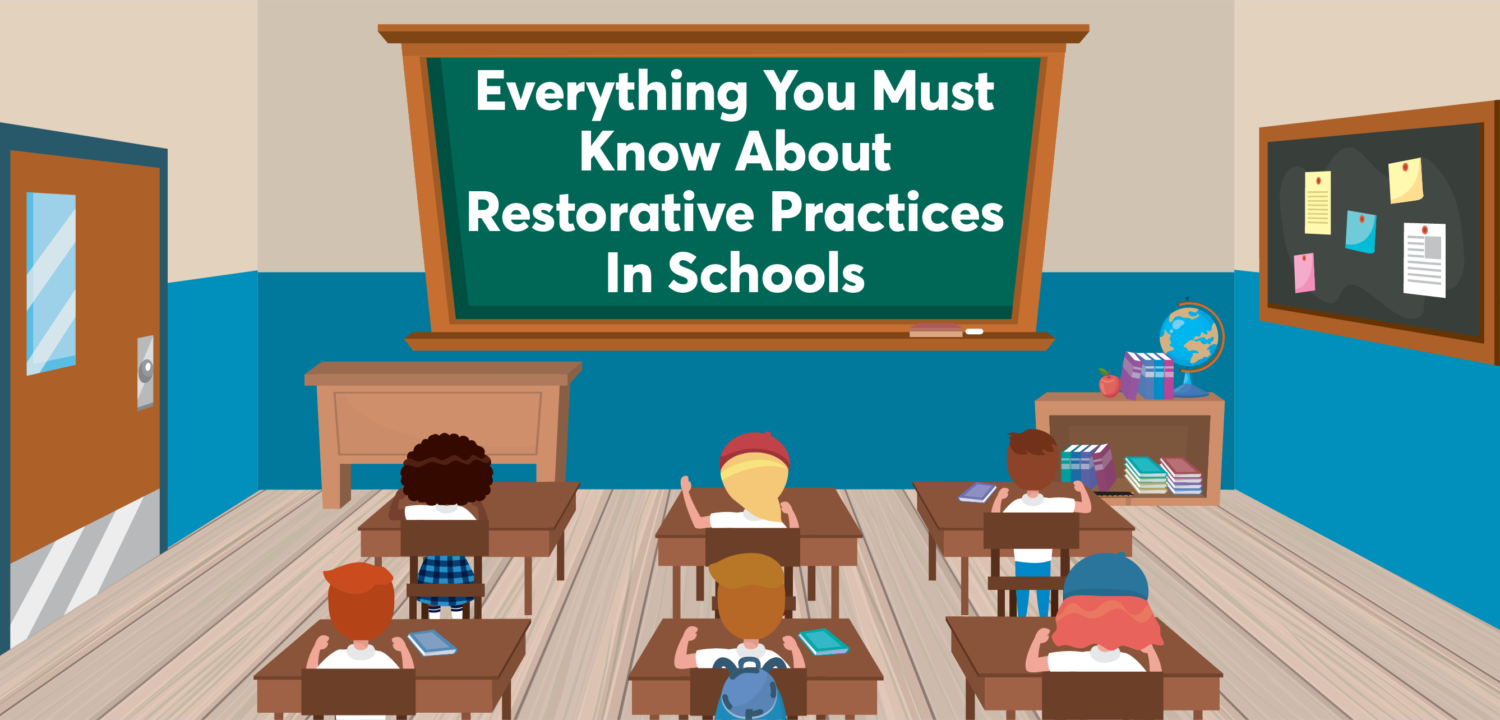Restorative practices in Schools are a set of strategies that help foster safe, supportive, and inclusive learning environments. They can be used to address a wide range of issues, from conflict to bullying to mental health problems.
As the name suggests, they focus on repairing harm where it has occurred and preventing it from taking root. Such practices have been implemented in classrooms worldwide, showing positive results across various issues. If implemented correctly, the use of restorative practices is likely to lead to improved classroom management, greater levels of civility and respect between students and staff, and more trust and predictability throughout the school. Here’s how they can help in school settings:
- Reduce suspensions and expulsions: Restorative practices often involve more than just one person at a time. This helps reduce the number of suspensions, expulsions, and arrests in schools by helping students feel more connected to their peers and teachers.
- Reduce bullying and other behavioral problems: Restorative practices help students learn how to resolve conflicts peacefully, reducing bullying among students and different types of misbehavior (such as vandalism or theft).
- Increase academic performance: Students who engage in restorative practices report less stress about schoolwork because they can resolve problems with teachers instead of getting into trouble with them. Students also tend to do better academically when they learn how to solve conflicts themselves instead of being punished for them.
Restorative practices are a positive and proactive approach to discipline that focuses on repairing harm and strengthening relationships. They can help create a more effective school climate by building trust, cooperation, and mutual respect among students, parents, educators, and administrators. Here’s how restorative practices can be used in the classroom setting:
- Peer Mediation: Students work together to solve conflicts rather than turning them over to adults. This can be done through peer juries or mediating circles, where students have a voice in deciding how to resolve conflicts among their peers. This form of mediation encourages leadership skills and helps create relationships where students feel more comfortable discussing their issues without fear of being judged by anyone but their peers.
- Family Conferencing: Parents are invited into the classroom to discuss how best to support their child’s learning process and how they can help keep their child on a track towards reaching academic goals. This allows teachers and parents to clarify strategies for supporting a student’s learning at home and school to improve academic performance.
- Restorative Circles: These are often used after an incident has occurred in which students have been hurt or offended by another student’s behavior (e.g., name-calling). The group gathers together with the teacher present but not leading or directing the discussion. Instead, each student tells their story about what happened and how it made them feel, followed by listening from other members of the group who were involved or affected by what happened. This helps create opportunities for healing while preventing future problems from arising between those involved.
A survey of schools showed that 97% of schools found whole-school restorative approaches to be effective in preventing bullying. Here are some ideas for building restorative practices in your school:
👉 Identify the Problem
If a student is misbehaving or being disruptive, ask yourself if you know why. Is there an underlying issue? For example, did something happen at home or at lunch? Did someone push their buttons? You should always ask these questions when dealing with students who exhibit problematic behaviors. In addition, you may need to investigate what happened prior to the incident to understand why your student acted out.
👉 Let go of Perfectionism
It’s vital that you don’t mistake restorative practice for perfectionism. Restorative practice doesn’t mean that everything is perfect all the time. In fact, restorative practice acknowledges that there will always be conflict in our schools and classrooms — but it also means that you can use strategies to address those conflicts so they don’t escalate into bigger problems (like school violence).
👉 Ensure Students Understand Why They’re Participating
Students will be more likely to participate if they understand why they participate in these activities. It can be helpful for teachers to give students an explanation of why they are taking part in a restorative practice, such as, “Today we’re going to talk about what happened between you two yesterday at recess.” This helps students understand that they’re not being punished, but rather that this is a chance to solve their problems together as equals.
Create opportunities for students to get involved in community-building activities like volunteering at a local food bank or helping out at an animal shelter during lunchtime or after school. This allows students to work together on a project that benefits others. It also helps them develop empathy for others who may be struggling more than they are by allowing them to see how their actions impact others around them.
👉 Allow Students Time for Reflection
Restorative practices work best when there’s time for reflection afterward. Teachers should give students time to talk about what happened during each activity and how it made them feel so that everyone feels comfortable moving forward without any lingering issues.
When implemented well, these strategies can lead to peaceful school communities where students feel safe and valued for who they are and what they do.
Restorative practices will revolutionise the education sector. It will change how children view their mistakes and teachers as facilitators instead of severe punishments. As a result, the focus will shift to improving the behavior and not on one’s talent. As such, restorative practices are indeed one of the best ways to solve mischievous activities among children.
Square Panda India uses diverse approaches to ensure children progress in a joyful and holistic manner. To know more, visit ecce.squarepanda.in

